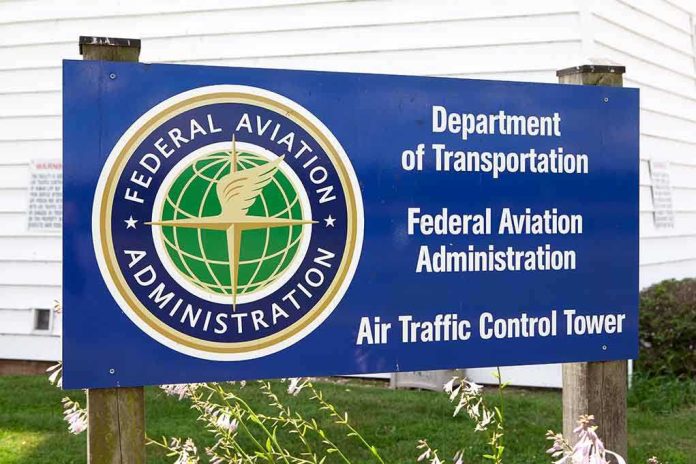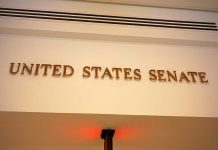
The unseen chaos of a government shutdown is not just in Washington gridlock—it’s in the anxious silence echoing through America’s airports as an invisible domino effect upends travel far beyond the nation’s busiest runways.
Story Snapshot
- Mandatory FAA flight cuts at 40 major US airports spark nationwide delays and cancellations
- Ripple effects cripple smaller regional airports like Fresno Yosemite International
- Air traffic controllers work without pay, raising safety and stress concerns
- Passengers, airlines, and local economies face mounting disruption as shutdown drags on
How Hub Airports Became the Bottleneck for a Nation
When the FAA issued its order to cut flights at 40 of the busiest US airports, the targets included the household names: Denver, Los Angeles, Dallas, Chicago, and Atlanta. These aren’t just airport codes—they’re the beating heart of America’s interconnected air network. The FAA, forced by a record-length government shutdown, began with a 4% cut on a chilly Friday in November, with plans to escalate to 10% as the freeze on federal funding continued. These reductions, engineered for safety as air traffic controllers soldiered on without pay, sent the first shockwaves through the system. What began as a calculated move to keep the skies safe quickly turned into a nationwide scramble, as delays rippled outward from the centers of air traffic gravity.
Passengers accustomed to seamless connections faced a new reality. A delayed flight in Dallas meant missed links in Fresno, and a bottleneck in Los Angeles stranded families hundreds of miles away. In the words of Fresno Yosemite International Airport’s spokeswoman, Vikkie Calderon, travelers had best “be patient and vigilant in monitoring their flight status by checking with their airline or downloading their airline mobile app for timely updates.” The dominoes kept falling: even airports not on the original FAA list, like Fresno, found themselves tethered to the fate of distant megahubs. Planes sat on tarmacs; gate assignments shuffled; and travelers, many with tight schedules and tighter budgets, were left clutching their boarding passes in limbo.
The Human Cost: Controllers, Crews, and Passengers on Edge
While the FAA’s top concern remained safety, the pressure on air traffic controllers became palpable. Working without pay, these professionals managed complex flight patterns and emergencies under increasing financial and emotional stress. Airlines, caught in the crosshairs, juggled revised schedules and swelling customer frustrations. The scene at gate lounges across the country became all too familiar: announcements of “unexpected delays,” harried staff fielding impossible questions, and weary passengers recalculating connections and contemplating missed commitments. The operational strain trickled down to every level—pilots, cabin crews, ground support, and even the rental car counters and hotels that rely on predictable airport rhythms.
Flight attendants sound the alarm about ‘ripple effect’ as US cuts flights – The Independent https://t.co/gzvaCwNpbc – The Independent via https://t.co/JHGq9ZHqq9
— 🚨 Breaking News Joe (@joebrooks) November 7, 2025
At the same time, airlines faced the risk of lasting reputational damage and revenue loss. Each canceled or delayed flight meant not only direct financial hits but also erosion of passenger confidence. The cumulative effect stretched beyond airport walls, threatening local economies and the businesses that depend on reliable air travel.
Ripple Effects Reach Regional Airports and Local Economies
For regional airports, the crisis illuminated just how dependent they are on the smooth operation of major hubs. Fresno Yosemite International, a gateway for California’s Central Valley, became a case study in the downstream consequences of distant decisions. Even a handful of delayed arrivals from Denver or Los Angeles could disrupt an entire day’s flight schedule, stranding travelers and cargo, and forcing airport officials into crisis management mode. The local impact extended beyond inconvenience: tourism slumped, business meetings were missed, and the broader regional economy felt the pinch as the shutdown wore on.
As the days ticked by, the aviation industry’s interconnectedness became both its strength and its Achilles’ heel. Major disruptions at a single hub radiated out to secondary and tertiary airports in unpredictable ways. Business leaders and civic officials expressed growing concern, warning that continued flight reductions could inflict lasting damage on local economies and the national aviation system as a whole.
Systemic Vulnerability and the Push for Change
The government shutdown, now the longest in American history, exposed the fragility of a network most travelers take for granted. The FAA’s phased reductions—first 4%, then 10%—revealed how little slack exists in the national aviation system. Safety remained the guiding principle, but as fatigue and frustration mounted among both employees and passengers, debate intensified over how to insulate essential infrastructure from political brinksmanship.
This episode turned the “ripple effect” from airline jargon into a lived experience for millions. It forced a reckoning not just over the allocation of government funds but over the resilience of a system on which so many communities, businesses, and families rely. Whatever the political outcome in Washington, the memory of empty gates and anxious crowds may linger long after the shutdown ends—and may spark new calls for reform and contingency planning in the world’s busiest airspace.
Sources:
Service cuts at US airports cause ripple effects at Fresno Yosemite International













